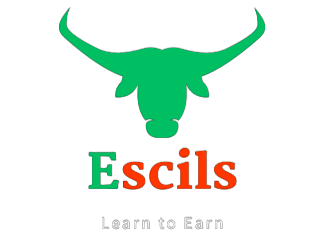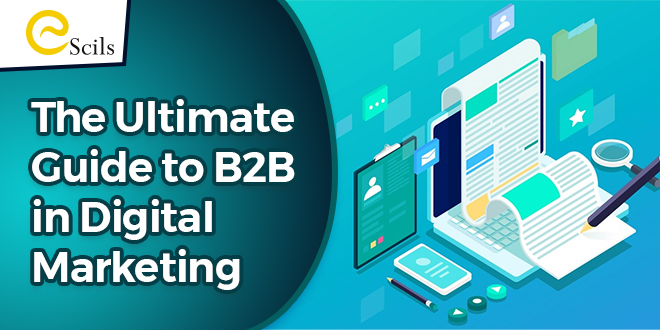Introduction
Business-to-business marketing is an abbreviation of B2B marketing. It is one of the two huge marketing categories, and it differs significantly from the other big marketing category, B2C marketing (business-to-consumer) marketing.

B2B marketing has many unique benefits compared to B2C marketing, mainly because we target other customers. B2C companies sell their products/services directly to end consumers and B2B companies market to other businesses. Businesses have different behavioral and purchasing considerations than direct consumers, and we can involve one or more decision-makers.
In this definitive guide to B2B marketing in 2021, we will answer questions and discuss various ways to market your business more successfully in 2021 and beyond.
Planning and Preparation

How should we plan B2B marketing strategies? Planning various marketing strategies should focus on understanding the target audience. So let’s start by discussing the current state of the B2B sales/marketing funnel.
As mentioned earlier, the behavior of B2B audiences has undergone some changes. In recent years, digital transformation has particularly changed the way B2B buyers research and find B2B suppliers.
The traditional B2B funnel
In the past, the B2B marketing funnel was very predictable, with four main “stages”:

- Cognitive stage: Strangers understand your brand and the products/services you provide.
- Interested Stage: Where are some strangers interested in the solutions you provide? This is where these strangers become potential customers or potential customers.
- Consideration stage: In the consideration stage, potential customers are considering different options to compare their products with competitors.
- Purchase stage: The stage where the potential customer finally takes action and purchases your product.
However, the process has undergone major changes because of several key reasons:
Strategies such as telephone and email are no longer effective as B2B buyers get younger and younger. Therefore, raising awareness is more difficult, and we will have to adapt to new channels. On average, more stakeholders/decision-makers are now involved in B2B purchasing decisions. Today, a company usually has about six decision-makers, and it also involves middle and lower managers.
In the past, B2B buyers were often passive (they waited until suppliers approached them), while modern B2B buyers are more active. As mentioned above, most B2B buyers conduct their own research online to compare different potential solutions. B2B marketers need to ensure that your potential customers and potential customers can find your content online through as many digital channels as possible. Nearly 100% of B2B leads can repeat one or more stages of the traditional marketing funnel, creating a cycle instead of a funnel.
Top Funnel: Generating Leads

At this stage of the funnel, customers may not understand how they help with their pain. Note that the upper part of the funnel contains the maximum number of perspectives. Instead of designing a funnel to pull as many perspectives as possible, it must be structured to pull the prospects that are most likely to be converted to the next stage of the funnel. Therefore, marketing content, such as blogs, can help you understand the prospects and preview potential solutions. At this stage, we establish trust, authority, and thought leaders.
Middle Funnel: Nurturing Leads
Once potential customers enter the CRM system, companies can provide them with content tailored directly to their unique needs and pain points. Companies with long sales cycles will avoid direct sales as soon as possible because they don’t want to risk scaring away potential customers. Remember that many B2B products and services are expensive. Potential clients need time to research, consult their team, and decide.
This funnel stage may take longer to complete. It may take weeks or months for potential customers to convert at this stage, so it’s important to optimize the content they receive. Marketers must constantly test their content to determine what potential customers need before they contact the sales team.
Middle Funnel: Bonding with Customer
Not all leads will continue to move through the funnel, which is fine because once a leader approaches the sales team, it takes more work and resources to convert them into paying customers. This is where sales presentations and meetings play a critical role. Face-to-face communication with customers is an important part of the sales process. But content can still make a difference. At this stage of the funnel, marketers can create detailed technical reports, a page, and slides to help the sales team complete the transaction.
Bottom Funnel: Conversion
Closing the sale is not the end of the relationship. Once a commitment has been secured, the company needs to deliver on its promises and maintain a close relationship with the customer to ensure they have a positive experience. Follow-up calls and meetings may be necessary to ensure the client is satisfied with their purchase.
Once again, the marketing team can leverage content to keep clients happy and engaged. For example, email content can help keep clients updated on additional features, upcoming trends, and more. Over time, as the relationship develops, the marketing and sales teams can encourage existing clients to make additional purchases or refer the company to their colleagues. Keeping clients is usually more profitable than making new ones, so it’s important to maintain a strong connection with customers after they’ve converted.
Popular B2B Digital Channels
An effective B2B digital marketing strategy uses any channel that potential customers can use to learn more about a specific product, service, or hotspot. B2B marketers need to know which channels will have the most impact when attracting specific buyer roles. Both B2B and B2C customers move between multiple channels throughout the decision-making process. Let’s look at the seven most popular B2B marketing channels:
Content Marketing:
By creating and distributing digital content, B2B companies can build brand awareness, improve search engine rankings, and generate audience interest.
Email marketing:
Email marketing is one of the most popular ways to reach potential customers. It allows B2B marketers to put targeted and personalized messages directly in front of qualified potential customers.
Paid Search:
PPC advertising makes it easy for B2B potential customers to find the information they are looking for.
SEO:
Search engine optimization helps to maximize the likelihood that potential customers will find and click on your website while looking for solutions to their pain points.
Social Media Marketing:
B2B customers want brands to appear on the most popular social media channels. This type of marketing content helps to give the brand a personality that applies to the customer.
Webinars/Videos:
Live and pre-recorded videos represent some of the most engaging forms of digital content. Videos can help customers get the information they need while better understanding the brand.
Event Marketing:
Face-to-face and virtual events are effective ways to attract B2B customers.
CONCLUSION
B2B digital marketing strategies can take many forms. This section will look at some real-life examples to show the diversity of digital marketing efforts. Remember, just because one company sells products and services to another does not mean that your marketing should be boring. As we’ve seen, as a B2B content marketer, there are many elements to consider. Although this can intimidate beginners, I hope you have identified several commonalities of the best B2B content marketing exchange, such as being highly actionable, engaging, targeting specific audiences, and directed.


